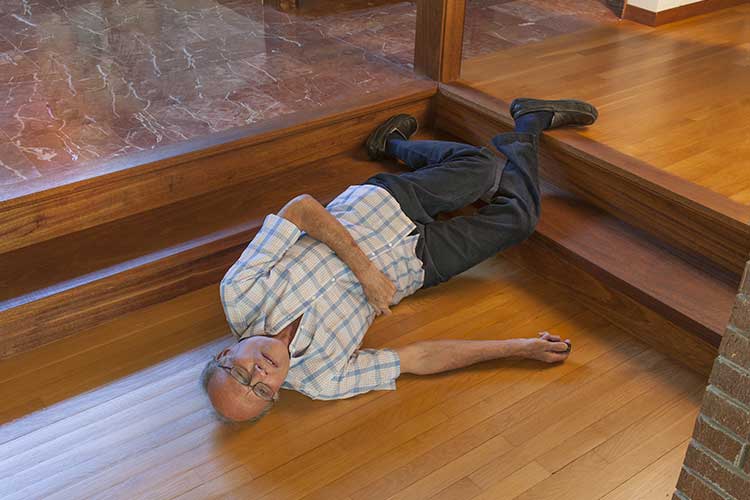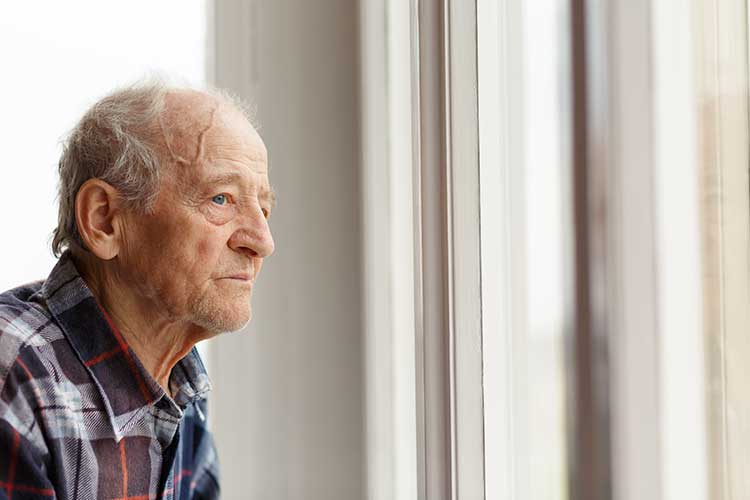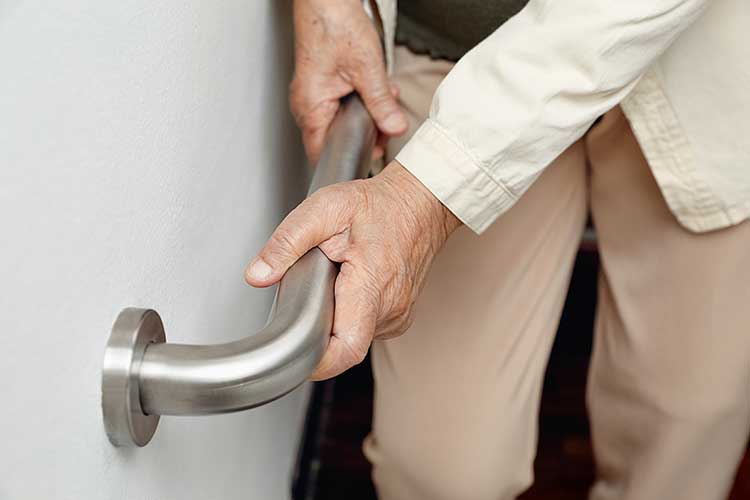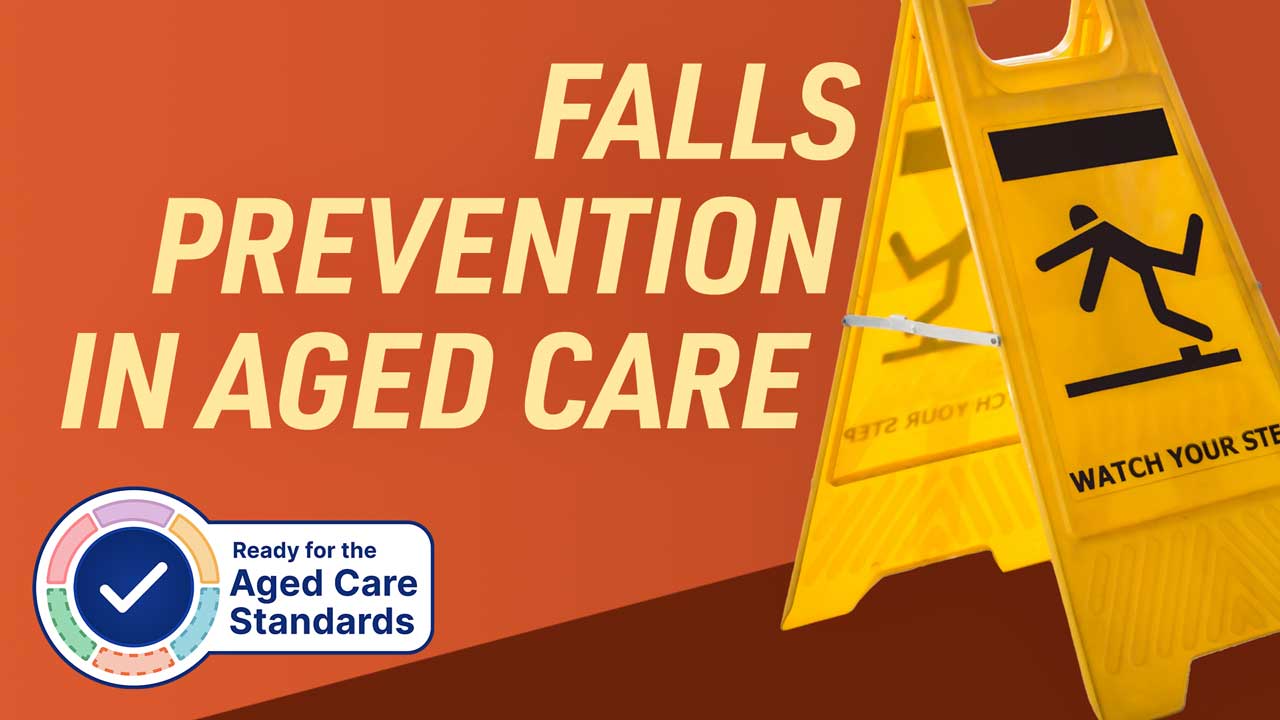Falls in older people are often serious, resulting in functional decline, reduced quality of life, loss of independence and, in severe cases, even death (Stefanacci & Wilkinson 2023).
According to the Australian Institute of Health and Welfare (2023), 140,000 people over 65 years of age were admitted to hospital due to a fall in 2021-2022.
Despite these alarming statistics, most falls are preventable.
What is a Fall?

A fall is ‘an event that results in a person coming to rest inadvertently on the ground or floor or other lower level’ (DoHaAC 2023).
Most falls occur due to a combination of both intrinsic (personal) and extrinsic (environmental) factors. The more risk factors that are present, the more likely the person is to fall (Queensland Health 2022). Some common risk factors include:
| Intrinsic risk factors | Extrinsic risk factors |
|---|---|
|
|
(WA DoH 2024; Queensland Health 2022; Clay et al. 2018)
Older People and Falls
Changes to the body due to the normal ageing process can worsen existing risk factors or cause new ones to arise. Inadequate physical fitness, poor nutrition or hydration, and illnesses or other conditions may compound this risk further (Healthdirect 2023).
Older people are 12 times more likely to fall than have a motor vehicle or pedestrian accident (Better Health Channel 2022). Falls are the biggest cause of unintentional injury in older people over 65 (Healthdirect 2023), with this age group accounting for 60% of fall hospitalisations in Australia (AIHW 2023).
Overall, about one-quarter of older people fall every year (Healthdirect 2023).
Risk factors associated with age include:
- Balance issues and unsteadiness
- Muscle weakness and joint stiffness
- Poor eyesight
- Medication side effects
- Slower reaction time
- New health problems (e.g. incontinence or dementia)
(Healthdirect 2023; Better Health Channel 2022)
Consequences of Falling
Even in cases where an injury does not occur, the person may develop a fear of falling that reduces their confidence and independence. This, in turn, only increases their risk of falling again in the future, as reduced physical activity can lead to poor balance, muscle weakness and stiff joints (Stefanacci & Wilkinson 2023; Healthdirect 2023).
Falls can lead to a variety of physical, emotional, social, short-term and long-term consequences, including:
- Bruises, sprained ligaments, strained muscles and other minor injuries
- Hip fracture (the most common injury caused by falls)
- Dislocations
- Broken bones
- Torn ligaments
- Deep cuts
- Organ damage
- Loss of consciousness
- Head injury
- Impaired mobility
- Social isolation
- Loss of confidence and independence
- Functional decline
- Stiff joints and weak muscles due to lack of activity
- Increased risk of future falls
- Death
(Stefanacci & Wilkinson 2023; Better Health Channel 2022; Healthdirect 2023)
Falls Prevention Under the Strengthened Aged Care Quality Standards
Standard 5: Clinical Care - Outcome 5.5: Clinical Safety under the strengthened Aged Care Quality Standards (Action 5.5.4) requires aged care providers to establish processes for reducing falls and harm from falls by:
- Optimising older people’s mobility to reduce functional decline
- Providing appropriate and timely care after an older person has fallen
- Assessing fall and injury events to determine why they occurred and what the consequences were
(ACQSC 2024)

Preventing Falls in Aged Care
Preventing falls requires a multifactorial approach that addresses each person’s modifiable risk factors (Clay et al. 2018).
Vulnerable people should be identified using a validated falls risk assessment tool, and appropriate interventions should be implemented. Multiple solutions will likely need to be implemented to target several individual risk factors (Clay et al. 2018).
Universal Precautions
The following are some universal precautions that aged care staff can take to prevent falls:
- Ensure effective communication between staff
- Ensure the person is familiar with their environment
- Ensure the person knows how to use any call lights or alert devices
- Ensure personal belongings such as glasses are within reach
- Answer call lights as soon as possible so that the person does not need to ambulate unnecessarily
- Remove debris from outdoor walkways (e.g. moss, slime, leaves)
- Repair any broken, uneven or damaged flooring
- Ensure tables and benches do not have sharp corners
- Keep the floors clean, dry and free of clutter, and clean any spills as soon as possible
- Remove or tape down electrical cords
- Mark changes in the floor level with a bright colour
- Use non-slip mats in wet areas (e.g. bathroom, kitchen) and non-slip flooring
- Implement handrails, seats or handheld nozzles in the shower and bath
- Secure mats and rugs with adhesive strips; remove any that are torn or wrinkled
- Use bright lighting and nightlights to increase visibility, and ensure lights are switched on
- Use curtains or blinds to reduce glare
- Change lights if they are not bright enough
- Encourage the person to wear non-slip footwear
- Keep the person’s bed at an appropriate height (their feet should be able to touch the floor with their hips, knees and ankles at a 90-degree angle) and lower it while they are resting
- Keep bed and chair brakes on
- Ensure older people know how to use mobility and assistive devices
- Avoid restrictive practices where possible
- Establish a bowel and bladder function care plan
- Ensure older people and staff are properly informed about any medicines, including instructions, dosage and any side effects
- Ensure the person is not taking unnecessary medicines
(Performance Health 2019; ACSQHC 2009; Healthdirect 2023; Better Health Channel 2022)

Test Your Knowledge
Question 1 of 3
Which one of the following is an example of an effective falls prevention strategy in aged care settings?
Topics
Further your knowledge
 Free
Free


 Free
FreeReferences
- Aged Care Quality and Safety Commission 2024, Standard 5: Clinical Care, Australian Government, viewed 24 May 2024, https://www.health.gov.au/resources/publications/strengthened-aged-care-quality-standards-august-2025?language=en/environment
- Australian Commission on Safety and Quality in Health Care 2009, Preventing Falls and Harm From Falls in Older People, Australian Government, viewed 24 May 2024, https://www.safetyandquality.gov.au/sites/default/files/migrated/Guidelines-HOSP.pdf
- Australian Institute of Health and Welfare 2023, Injury in Australia: Falls, Australian Government, viewed 24 May 2024, https://www.aihw.gov.au/reports/injury/falls
- Better Health Channel 2022, Preventing Falls at Home, Victoria State Government, viewed 24 May 2024, https://www.betterhealth.vic.gov.au/health/healthyliving/falls-prevention-at-home
- Clay, F, Yap, G & Melder, A 2018, Risk Factors for in Hospital Falls: Evidence Review, Monash Health, viewed 24 May 2024, https://monashhealth.org/wp-content/uploads/2019/01/Risk-factors-for-falls_Final-27082018.pdf
- Department of Health and Aged Care 2023, National Aged Care Mandatory Quality Indicator Program Manual 3.0–Part A, Australian Government, viewed 24 May 2024, https://www.health.gov.au/resources/publications/national-aged-care-mandatory-quality-indicator-program-manual-20-part-a
- Healthdirect 2023, Older People and Falls, Australian Government, viewed 24 May 2024, https://www.healthdirect.gov.au/falls
- Performance Health 2019, The Role of Nurses in Fall Prevention, Performance Health, viewed 24 May 2024, https://www.performancehealth.com/articles/the-role-of-nurses-in-fall-prevention
- Queensland Health 2022, Falls Risk Factors - Stay on Your Feet, Queensland Government, viewed 24 May 2024, https://www.health.qld.gov.au/stayonyourfeet/facts/risk-factors
- Stefanacci, RG & Wilkinson, JR 2023, Falls in Older Adults, MSD Manual, viewed 24 May 2024, https://www.msdmanuals.com/en-au/home/older-people%E2%80%99s-health-issues/falls-in-older-adults/falls-in-older-adults
- Western Australia Department of Health 2018, Risk Factors for Falls, Government of Western Australia, viewed 24 May 2024, https://www.health.wa.gov.au/Articles/F_I/Falls-prevention-and-management-in-WA/Research-and-education-in-falls/Risk-factors-for-falls
 New
New 
